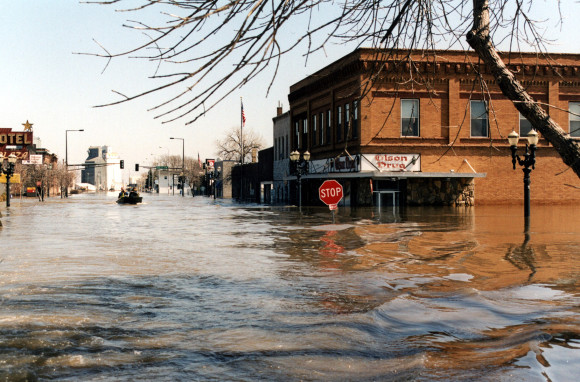The agency responsible for managing the federal flood insurance program has made progress in carrying out key changes mandated by Congress in two recent laws but lacks resources and data to completely implement others, a government report says.
For instance, the Federal Emergency Management Agency (FEMA) repealed certain rate increases and got premiums refunds to policyholders of the National Flood Insurance Program (NFIP) as promised under the law. Refunds began in October 2014 and, according to FEMA, almost all refunds were issued by December 2014.
But FEMA said it has been unable to make insurance rate changes for business properties because it cannot distinguish among policies for businesses, nonprofits, and other nonresidential properties.
According to the Government Accountability Office (GAO) report, FEMA has improved its mapping process but still has a long way to go in this area. FEMA estimates that mapping requirements are about 30 percent complete and that it will take several years to finish. The study cites inadequate data and funding.
Progress has been mixed in the area of reserves also. While FEMA has set up a required reserve fund intended to keep the NFIP’s $23 billion debt to the federal government from growing, it has not met the yearly target for reserve fund contributions, according to GAO. It has, however, begun raising assessments and surcharges to boost the fund.
Also, the report says the government has made little progress in a key expense area: how it compensates Write Your Own (WYO) private insurers and agencies for servicing flood policies so that the cost is more in line with the private industry’s actual expenses. Citing data quality and reporting issues, FEMA told GAO it expects it to be years before it can better evaluate these WYO expenses. It has, however, reduced the expenses on certain very high-risk policies.
On the other hand, the agency has almost fully implemented mitigation assistance requirements and has established an interim consumer advocate office, despite no funding for this office, according to the GAO.
FEMA has taken some action on an affordability study that the law requires, but says data challenges have delayed that also. In February and September 2015, the National Academy of Sciences is to deliver two reports that identify approaches for both an NFIP affordability framework and nationwide affordability study.
Amended Law
The Biggert-Waters Act, enacted in July 2012, was an attempt by Congress to strengthen the finances and administration of the NFIP, which has had its share of challenges and critics over the years. Biggert-Waters required FEMA to phase-out almost all discounted insurance premiums and establish a reserve fund. However as these changes were being implemented, a number of communities and interests complained about unaffordable premiums, lost home sales, inaccurate maps, lack of community input and other issues. In response, in March 2014, Congress passed the Homeowner Flood Insurance Affordability Act (HFIAA), which restored premium subsidies and rolled back increases while altering other Biggert-Waters requirements.
Members of the House Financial Services Committee asked GAO to assess FEMA’s implementation of the laws.
FEMA estimated that it has completed almost half of Biggert-Waters Act sections and about one-third of HFIAA sections as of December 2014, and said it is taking action on others, including required studies.
However, FEMA and representatives of organizations with flood insurance expertise told GAO that the agency also faces challenges related to resources, the complexity of the legislation, and the need to balance NFIP’s financial solvency goal with its affordability goals.
FEMA was implementing the Biggert-Waters Act when HFIAA was passed and had to undo some of its previous actions. FEMA was operating within the budget for fiscal year 2014 that was approved prior to H FIAA and while HFIAA made funding available for certain requirements, it did not do so for others such as the flood insurance advocate position.
Was this article valuable?
Here are more articles you may enjoy.



 CEO Sentenced in Miami to 15 Years in One of the Largest Health Care Fraud Cases
CEO Sentenced in Miami to 15 Years in One of the Largest Health Care Fraud Cases  Three Top P/C Insurers Account for Most of Insurance AI Patents
Three Top P/C Insurers Account for Most of Insurance AI Patents  Cloudy Future for Bourbon Has Jim Beam Closing Distillery for a Year
Cloudy Future for Bourbon Has Jim Beam Closing Distillery for a Year  Board Calls for US Steel to Address Safety Issues as It Rebuilds Site of Fatal Explosion
Board Calls for US Steel to Address Safety Issues as It Rebuilds Site of Fatal Explosion 


